 W
WAllchar deposit is a low-temperature hydrothermal gold–arsenic–antimony–thallium deposit in Kavadarci Municipality of North Macedonia. For some time, the thallium-rich part of the deposit was mined. The Crven Dol mine yielded thallium and the ore body still holds estimated amount of 500 t of thallium. The mineral lorandite from this ore deposit is being used to determine the solar neutrino flux.
 W
WDuring the late 1970s and through the 1980s, Mohave and Coconino County, Arizona, immediately north and south of the Grand Canyon and west of the Navajo Indian Reservation were explored for Arizona breccia pipe uranium mineralization. The search area included the region between the Colorado River and the Utah border known as the “Arizona Strip”.
 W
WCarbonate-hosted lead-zinc ore deposits are important and highly valuable concentrations of lead and zinc sulfide ores hosted within carbonate formations and which share a common genetic origin.
 W
WCarlin–type gold deposits are sediment-hosted disseminated gold deposits. These deposits are characterized by invisible gold in pyrite and arsenopyrite. This dissolved kind of gold is called "Invisible Gold", as it can only be found through chemical analysis. The deposit is named after the Carlin mine, the first large deposit of this type discovered in the Carlin Trend, Nevada.
 W
WThe Danlou Occurrence, also known as the Danlou Gold Occurrence and the Mortimer Occurrence, is a mineralized zone in Northeastern Ontario, Canada. Gold is the occurrence's primary commodity while copper and silver are secondary commodities. It occurs in a quartz vein within a diabase-porphyry shear zone. Pyrite and chalcopyrite are present in small amounts.
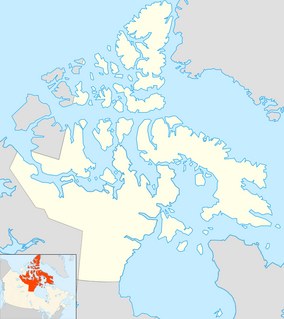 W
WFerguson Lake is a lake in Kivalliq Region, Nunavut, Canada. It is located 150 km (93 mi) north of the tree line, midway between Yathkyed Lake and Qamanirjuaq Lake. The lake's outflow is to the east into the Ferguson River, which flows eastward through several lakes, emptying into northwestern Hudson Bay between Rankin Inlet and Whale Cove. The closest community is Baker Lake, 160 km (99 mi) to the north.
 W
WA field is a mineral deposit containing a metal or other valuable resources in a cost-competitive concentration. It is usually used in the context of a mineral deposit from which it is convenient to extract its metallic component. The deposits are exploited by mining in the case of solid mineral deposits and extraction wells in case of fluids.
 W
WIn mining, gangue is the commercially worthless material that surrounds, or is closely mixed with, a wanted mineral in an ore deposit. It is thus distinct from overburden, which is the waste rock or materials overlying an ore or mineral body that are displaced during mining without being processed, and from tailings, which is rock already stripped of valuable minerals.
 W
WHajigak Mine is the best known and largest iron oxide deposit in Afghanistan, located near the Hajigak Pass, with its area divided between Maidan Wardak and Bamyan provinces. It has the biggest untapped iron ore deposits of Asia.
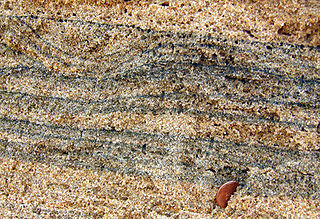 W
WHeavy mineral sands are a class of ore deposit which is an important source of zirconium, titanium, thorium, tungsten, rare-earth elements, the industrial minerals diamond, sapphire, garnet, and occasionally precious metals or gemstones.
 W
WIronsand, also known as iron-sand or iron sand, is a type of sand with heavy concentrations of iron. It is typically dark grey or blackish in colour.
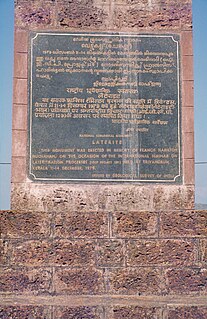 W
WLaterite is both a soil and a rock type rich in iron and aluminium and is commonly considered to have formed in hot and wet tropical areas. Nearly all laterites are of rusty-red coloration, because of high iron oxide content. They develop by intensive and prolonged weathering of the underlying parent rock. Tropical weathering (laterization) is a prolonged process of chemical weathering which produces a wide variety in the thickness, grade, chemistry and ore mineralogy of the resulting soils. The majority of the land area containing laterites is between the tropics of Cancer and Capricorn.
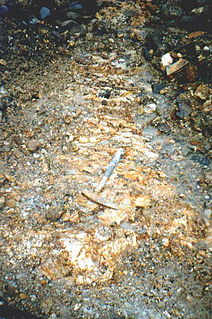 W
WIn geology, a lode is a deposit of metalliferous ore that fills or is embedded in a fissure in a rock formation or a vein of ore that is deposited or embedded between layers of rock. The current meaning dates from the 17th century, being an expansion of an earlier sense of a "channel, watercourse" in late Middle English, which in turn is from the 11th-century meaning of lode as a ‘course, way’.
 W
WIn geology, mineralization is the deposition of economically important metals in the formation of ore bodies or "lodes" by various process.
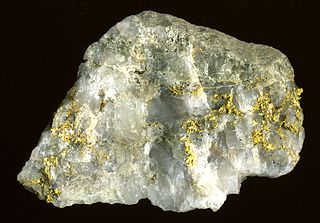 W
WVarious theories of ore genesis explain how the various types of mineral deposits form within the Earth's crust. Ore-genesis theories vary depending on the mineral or commodity examined.
 W
WAn ore shoot is a mass of ore deposited in a vein.The ore shoot consists of the most valuable part of the ore deposit. An ore shoot is the area of concentration containing primary ore along the veins present in the rocks.
 W
WIn geology, a placer deposit or placer is an accumulation of valuable minerals formed by gravity separation from a specific source rock during sedimentary processes. The name is from the Spanish word placer, meaning "alluvial sand". Placer mining is an important source of gold, and was the main technique used in the early years of many gold rushes, including the California Gold Rush. Types of placer deposits include alluvium, eluvium, beach placers, and paleoplacers.
 W
WThe Rabbit Lake Occurrence is a mineral showing near the southeastern shore of Rabbit Lake in Northeastern Ontario, Canada. Situated in northeastern Askin Township, the occurrence contains primary cobalt, nickel and gold mineralization but silver is also present. It has a width of 46 cm (18 in) and is hosted by a fracture zone in conglomerate-greywacke of the Huronian Supergroup.
 W
WSaprolite is a chemically weathered rock. Saprolites form in the lower zones of soil profiles and represent deep weathering of the bedrock surface. In most outcrops its color comes from ferric compounds. Deeply weathered profiles are widespread on the continental landmasses between latitudes 35°N and 35°S.
 W
WSedimentary exhalative deposits are ore deposits which are interpreted to have been formed by release of ore-bearing hydrothermal fluids into a water reservoir, resulting in the precipitation of stratiform ore.
 W
WThe Temagami Occurrence is a geological occurrence in Northeastern Ontario, Canada. It is located near the southern end of Kanichee Lake in west-central Strathy Township. It is named after Temagami, the municipality in which the occurrence is located in.
 W
WThe Tri-State district was a historic lead-zinc mining district located in southwest Missouri, southeast Kansas and northeast Oklahoma. The district produced lead and zinc for over 100 years. Production began in the 1850s and 1860s in the Joplin - Granby area of Jasper and Newton counties of southwest Missouri. Production continued until the closure of the Picher, Oklahoma mines in 1967, and the "Swalley" mine near Baxter Springs, Kansas in 1970. The tri-state district includes three mining-related Superfund sites: the Tar Creek Superfund site in Oklahoma; the Jasper County and Newton County sites in Missouri; and the Cherokee County site in Kansas.
 W
WUranium ore deposits are economically recoverable concentrations of uranium within the Earth's crust. Uranium is one of the more common elements in the Earth's crust, being 40 times more common than silver and 500 times more common than gold. It can be found almost everywhere in rock, soil, rivers, and oceans. The challenge for commercial uranium extraction is to find those areas where the concentrations are adequate to form an economically viable deposit. The primary use for uranium obtained from mining is in fuel for nuclear reactors.
 W
WVolcanogenic massive sulfide ore deposits, also known as VMS ore deposits, are a type of metal sulfide ore deposit, mainly copper-zinc which are associated with and created by volcanic-associated hydrothermal events in submarine environments.